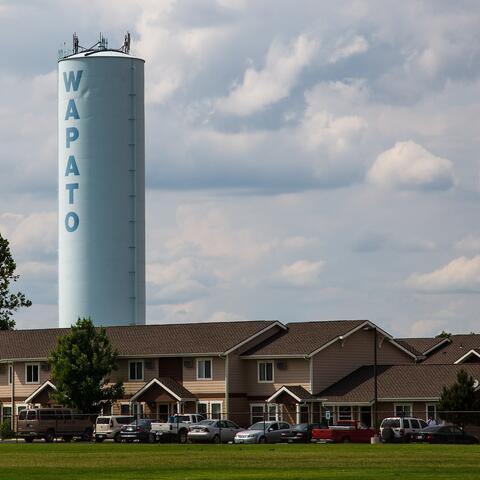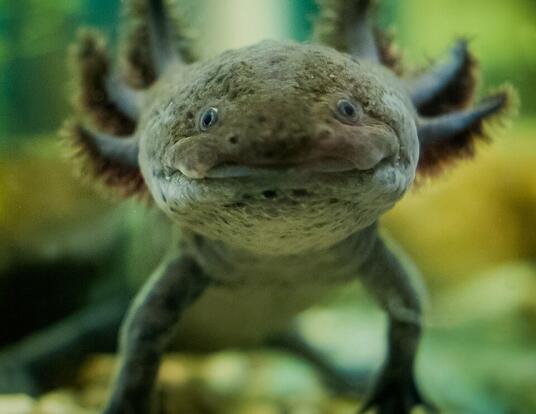Russell Lande: 2025 Centennial Medal Citation
Russell Lande brings into focus the impossibly complex forces of life on Earth. One of the most influential conservation and population biologists of his time, Lande has created finely tuned theoretical models and rigorous analytical frameworks that help us understand the genetic mechanisms by which species arise and evolve and either overcome or succumb to threats of extinction. He specializes in population biology and quantitative genetics, fields that combine math and biology to shed light on relationships between species, the dynamics of ecosystems, and how demographic trends of birth and death play out on the grandest scales. Through a lifetime of cutting-edge work, Lande has revealed the path of evolution in the past and prospects for life in the future.
Born in Mississippi, Lande spent formative years in Southern California, where he earned a bachelor’s degree in biology in 1972 at the University of California, Irvine, and cultivated a lifelong interest in ecology. He completed his first year of graduate study at the University of Chicago before transferring to Harvard with his advisor Richard Lewontin, earning his PhD in organismic and evolutionary biology in 1976. After postdoctoral work with James F. Crow at the University of Wisconsin, Lande went on to hold professorships at the University of Chicago, the University of Oregon, the University of California, San Diego, Imperial College London, and the Norwegian University of Science and Technology. He is a member of the National Academy of Sciences, a Fellow of the Royal Society of London, and the recipient of the international Balzan Prize, the University of Oxford’s Weldon Prize for mathematical contributions to biology, and a MacArthur “Genius” grant.
Lande has vastly improved our understanding of the evolution of complex traits influenced by multiple genes, revolutionizing the methodologies that dominated the field of genetics when he was a student. One of his most important contributions came in 1983, when he and Stevan Arnold developed a seminal theory and statistical method for measuring the intensity of natural selection on correlated traits, such as leg length and total body size. That paper has been cited more than 3,000 times, a staggering figure in such a specialized field.
This is only the tip of the iceberg when it comes to Lande’s influence, as John Wakeley, professor of organismic and evolutionary biology, explains. “Russ Lande has made great strides in connecting different levels of biological organization, from genes to the traits of organisms and the interplay of these in evolution,” Wakeley says. “Lande bridged this gap with robust, workable models. Part of the trick of doing this work is to come up with models that capture the basic dynamics in a relatively simple way and make predictions that can be tested and fit to data without getting bogged down. There’s an art to it that Lande has mastered.”
Daniel Hartl, Higgins Professor of Biology in the Faculty of Arts and Sciences and Professor in the Department of Immunology and Infectious Diseases at the Harvard T.H. Chan School of Public Health, counts himself among Lande’s many admirers. “Russ Lande is esteemed as a leading theorist whose work has deepened scientific understanding of evolution and influenced generations of researchers in related fields,” Hartl says. “His contributions are foundational. He has crossed disciplinary boundaries, impacting not just evolutionary biology, but also ecology, genetics, and conservation science, and covered a wide range of topics, with important practical implications. I would rank him among the top two or three percent of evolutionary biologists.”
Lande’s practical contributions to defending biodiversity and promoting conservation biology are legendary. In the 1980s, he developed a model that helped save the northern spotted owl from extinction in the Pacific Northwest, successfully demonstrating that the species needed all of its extant habitat to survive. The International Union for Conservation of Nature has leveraged Lande’s work even more broadly as the basis of its Red List Criteria, used to classify species at high risk of global extinction.
Brian Farrell, Monique and Philip Lehner Professor for the Study of Latin America, Professor of Organismic and Evolutionary Biology, and Curator of Entomology in the Museum of Comparative Zoology, has admired Lande’s work ever since graduate school, when Lande’s first papers were changing the field. “The importance of Russell Lande’s work to conservation lies in the explicit connection of general principles he discovered and developed into quantitative methods, combined with field data from populations of organisms,” Farrell explains. “The successful application of his approach to conservation of the spotted owl is an outstanding bridge of theory and practice, and naturally led to his quantitative models of extinction risk being used to broaden consideration of threatened species worldwide. When science meets policy, everyone wins.”
Russell Lande, for your work to create rigorous models that illuminate the complex paths of genetic inheritance and evolution, and for your lifelong dedication to conservation biology and the preservation of biodiversity against the threat of human-driven mass extinction, we are proud to award you the 2025 Centennial Medal.
Photos by Tony Rinaldo
Get the Latest Updates
Join Our Newsletter
Subscribe to Colloquy Podcast
Simplecast





